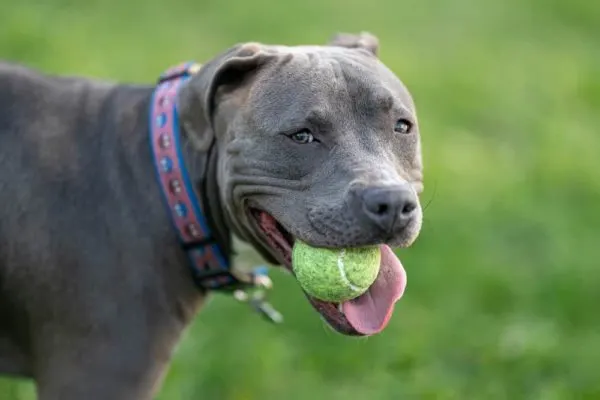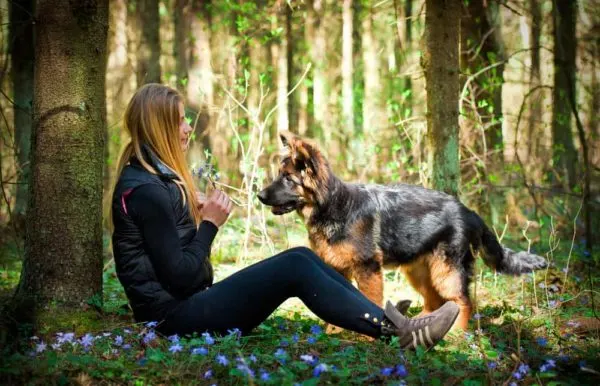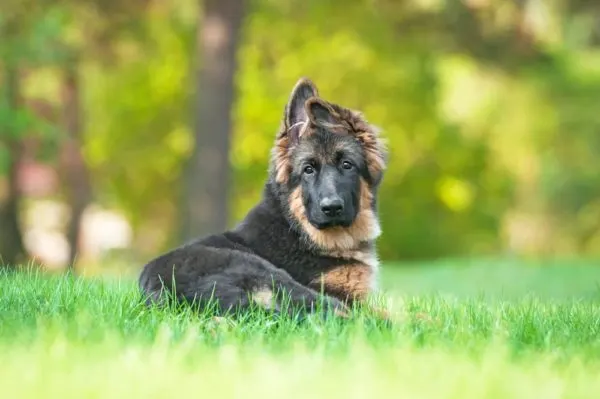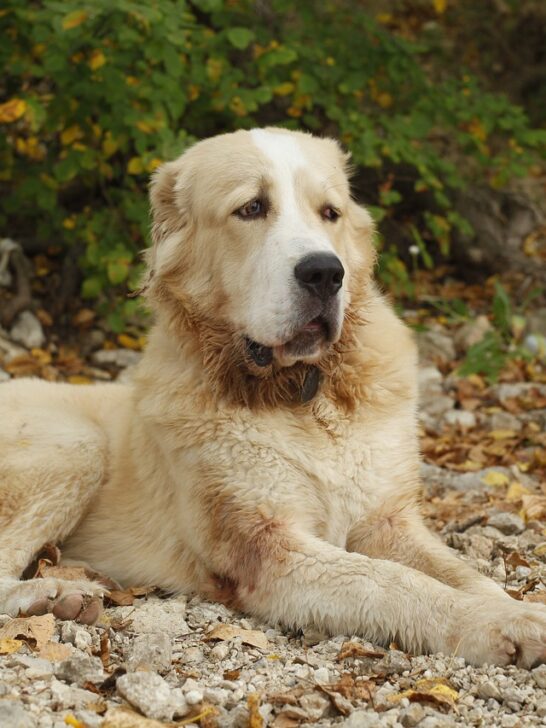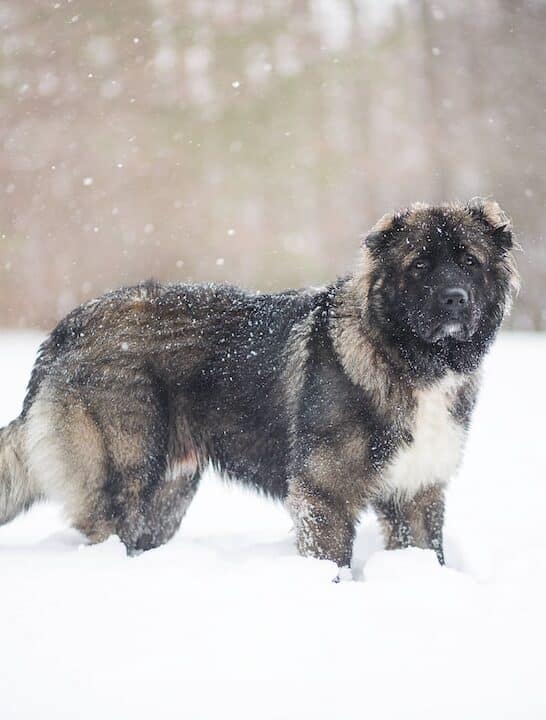German Shepherd Pitbull Mix: Top Ways To Make the Best
What do you get when you combine one of the most popular breeds with perhaps the most controversial dog of the twenty-first century?
Can you expect a dangerous crossbreed or a fantastic family pet? What two dog types would spring to your mind?
The German Shepherd is the second most popular dog in the US and the world, according to Highlandcanine.com.
Despite its reputation, the American Pit Bull Terrier sits at a not-so-shabby No. 15.
So what is a German Shepherd Pit Bull Mix all about?
There is no denying the considerable controversy that surrounds Pit Bulls and, more recently, German Shepherds, but the mix remains familiar and well-loved by those who have one.
Also going by the name German Sheppit or German Pit, the German Shepherd APBT mix is a medium to a large balanced and friendly dog with short fur that is commonly fawn, cream, blue, brindle, or black and tan.
Usually intelligent and easy to train, German Sheppits can learn to be social, are loyal family companions, and have minimal grooming needs.
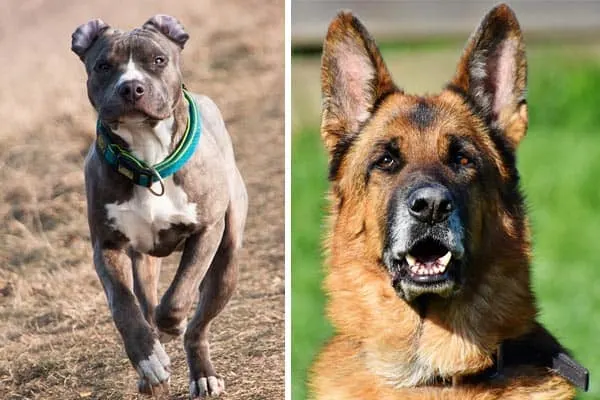
Why may a German Shepherd Pitbull Mix not be a good pet for you?
Like most dogs, German Pits take a special kind of owner. They are not for apartment life but may not do well on a farm, either.
You must take into account issues that affect the parent breeds such as reputation, breed-specific prejudice and regulation, exercise requirements, and unique socialization and training considerations.
What are the controversies of owning a Pit Bull Terrier Mix?
Although this article is not about Pit Bulls, it is difficult to mention Bully breeds without at least addressing what everyone immediately thinks.
Additionally, acquiring a Pit Bull mix may significantly affect where you can live.
Regardless of what side of the Pit Bull controversy you are on, owning one is becoming increasingly difficult.
Restrictions have become so tight that the list of countries and US states which allow Pit Bulls is fast becoming shorter than the vast number of locations that do not.
If you think, “Oh, well, I have a Staffordshire Bull Terrier or American Staffordshire Terrier,” forget it. Legislatures also ban Staffies as well as anything that looks like them.
Some countries go as far as to say that if your dog even resembles a Pit Bull Terrier, you must provide certified proof from an official body that she is not.
It is even becoming almost impossible to ship Pit Bulls by aircraft, carriers requiring reinforced crates, and assessing your pet’s temperament onsite.
Where they are not banned, Pit Bulls often face stringent requirements to go out in public, including double leashing and muzzles.
Be cautious with any breed having Pitbull blood
Anymore, consider carefully before acquiring a dog with Pit Bull heritage. We believe them to be sweet, docile, and loyal in the right hands, but it may not be worth the headache for you.
While you may get a little leeway for a dog you have owned for several years, public and government sentiment seems intent on abolishing the breed, although we do not see that happening either.
Mixed dogs are under the gun also. Some regulations prohibit dogs with as little as 10% of Pit Bull in their bloodlines.
While the tide is shifting away from breed-specific legislation in some states, like Washington, change is slow and global attitudes are not likely to reverse anytime soon.
In a few locales in Canada, decreases in Pit Bull numbers from breed bans have corresponded with a rise in bite cases in other canid types such as Herding Dogs like the GSD or Working Dogs like the Siberian Husky or Rottweiler.
Doberman Pinschers appear on more dangerous dog lists than German Shepherds, but poor breeding, overwhelming popularity, and insufficient training and socialization have begun to put negative attention on the GSD.
As German Shepherds join the ever-growing list of dangerous dogs, more countries will begin to ban them.
Mixed-breed dogs are an enigma for owners and governments.
People who intentionally breed hybrids often seek to improve their characteristics, and many mixed dogs are friendlier than the breeds involved in their ancestry.
However, the majority of countries deal with the problem by treating hybrids the same as the breeds that comprise their make-up.
Some might feel mixed dogs warrant bans because hybrids rank high among dogs involved in biting incidents, per AAHA.
However, bans may also be unfair when you consider how many dog breed combinations are possible.
German Shepherd Pitbull Mixes are working dogs
You may assume most dogs become badly behaved because their owners do not spend enough time with them, or they are the victims of abuse.
Perhaps biting dogs are simply the result of careless backyard breeding or they remain chained to a stake all day.
However, one of the most common causes of dogs acting out is a lack of exercise and mental enrichment.
Working dogs, especially, require more exercise than you might even imagine, and 30-minute walks do not cut it.
Both German Shepherds and Pit bulls are working dogs and, in some cases, performance animals.
Pit Bulls need 90 to 120 minutes of exercise daily, and some working Shepherds require over two hours of activity every day.
Expect your mix to require at least an hour and a half of exercise each day. You should split his exercise into a couple of sessions.
Ideally, half of his activities need to be strenuous. Additionally, dedicate about 25% or more of your German Sheppit’s exercise to training and socialization.
Training can include reviewing previously learned skills and teaching new behaviors. It can also involve engaging in team activities or performance events such as agility.
Treat socialization as an ongoing process for at least the first couple of years of your dog’s life. Exercise requires commitment and imagination on your part for numerous reasons.
- High activity level – Your Shepherd mix will be high-energy and very active even at the age of eight to 10 years.
- Intelligence – Your Pittie mix will need mental stimulation. Boredom can lead to destructive behavior and a lack of obedience.
- Two hours is an intense time commitment, and multiple sessions are better. Exercise is in addition to paying attention to your dog with high-quality interaction.
Intelligence can pose unique challenges
German Shepherds remain in high demand for their intelligence. As working dogs, they serve in a variety of capacities because of their obedience.
The GSD ranks second in working intelligence according to Yummypets.com on the renowned canine psychologist Stanley Coren’s work.
The Staffordshire Terrier, and presumably the Pit Bull, rank in the mid-30s. However, an intelligent dog does not necessarily mean training will be a cakewalk.
German Shepherds can have a problem accepting authority and, in rare cases, display dominance aggression.
Shepherds are large and forceful dogs, requiring a self-assured handler who can gain their respect.
A self-confident owner also needs to establish order in the family household.
Experience with dog ownership is beneficial with the GSD as evidenced by the many experts who report ease with training Shepherds.
Pit Bulls are tenacious and can be stubborn. It makes it challenging to get their attention once they become attracted to or fixated on an object or the task at hand.
However, Pit Bull Terriers also have a high willingness to please, making them moderately easy to train for someone who has plenty of patience and can offer a lot of positive reinforcement.
Your mixed breed is likely to have a combination of personality qualities from the German Shepherd and Pit Bull. Expect a brilliant dog with a mild stubborn streak.
Also, your dog will likely have a strong personality and thoughts about how things should go.
She will require firm guidance and plenty of praise and positive motivators like treats or toys to stay on the path you choose.
You must take ownership of your dog’s guard potential
German Shepherds have a strong guarding instinct, making them territorial and protective of family members.
A Shepherd’s protection may extend to animal members of a household as well. Moreover, the GSD has a loud bark and formidable presence, usually threatening ferociously way before attacking.
GSD Problems
- Guard training – Many people utilize poor training techniques when training German Shepherds and other breeds. Experts often discourage training guarding in dogs who already have a protective instinct, instead advising to emphasize obedience and socialization.
- Neglecting socialization – Some dog owners feel socialization may make their pets too friendly. Friendly guard dogs are still protective. Dogs require socialization to learn discernment, so they know not to attack unprovoked.
- Fail to recognize fearful dogs – Fearful German Shepherds are as likely to attack unprovoked as unsocialized dogs. Fear and shyness are present in a few lines of German Shepherds.
Pit Bulls are not natural guard dogs but can be trained to do about anything. Left to her own devices, a Pit Bull is friendly and social with everyone, bred not to show aggression against people.
Pit Bull Terrier Problems
- Guard training – Many train Pit Bulls improperly.
- Wrongful redirection – People retarget Pit Bulls, who are terriers, against humans, resulting in devastating attacks.
- Abuse or neglect – Pit Bull Terriers who lose their trust of people can react unpredictably, showing either fear or engaging in seemingly unprovoked attacks.
- Breeding – Founders of the major Pit Bull Clubs wrote standards prohibiting aggression against people. Breeders adhered and culled many Pit Bulls with temperament problems. However, at the same time, Pit Bull owners selected dogs for fighting prowess and aggression against other dogs. Pit Bulls are responsible for many pet and livestock deaths in the US because of lack of supervision and poor socialization combined with genetics and irresponsible breeding.
Pit Bull Myths
- Strongest canine jaws – German Shepherds have slightly stronger jaws than the Pit Bull, and both are considerably weaker than the Doberman, Rottweiler, Mastiff, and Anatolian Shepherd.
- Lock their jaws – Pit Bull grip in a terrier-like fashion but do not have a mechanism to lock their jaws.
- Wired differently – There is no scientific basis for claims that DNA programs Pit Bulls to kill more than other dogs. They are terriers, and their motivation for attacks may be more prey-driven than dogs with low predatory drives. Great Danes and Bloodhounds once had similar reputations for being bloodthirsty.
What kind of guard dog your hybrid becomes will depend on which of her parents’ traits he inherits.
A balanced blend produces a dog who is generally friendly but a good watchdog readily announcing suspicious activity.
More Pitbull traits will give you an outgoing and friendly dog while more GSD will lead to a better guard dog but one who is still reasonably amicable.
Exposing your puppy to numerous situations, people, and other animals are key to modifying any guard potential, fearful tendencies, and discriminatory skills.
Vigilant training and socialization will help your dog become a pleasant participant in social settings and discern between what is a threat and what is not.
You may not be able to eliminate the tendency for dog aggression
Many Pit Bulls learn to tolerate animals and show no aggression against other dogs.
We have volunteered at temperament-based dog parks where Pit Bulls were among the most common attendees with no incidents.
However, some terriers are true to generations of breeding and will always be dog aggressive. Still, other Pit Bulls have high predatory drives and will chase down anything that flees from them.
Each pet is an individual, and you will need to make regular assessments of your Shepherd Pitbull’s temperament to determine her suitability around other animals.
Enlist a professional if in doubt. Aggressive tendencies may not manifest until your dog reaches six months of age.
Females often show less aggression, but neutering your pet usually helps tremendously, especially with attitudes towards other dogs.
Your mixed breed may or may not have dog aggression but will likely have at least a moderate amount of prey drive.
Always use caution around other animals, especially small ones like cats and those with high flight potentials like sheep and horses.
How can a German Shepherd Pitbull Mix mix be an excellent pet for you?
Your Shepherd Pittie will be a loyal and affectionate family member
German Shepherds are devoted and affectionate. You should teach the importance of all family members because a Shepherd may show a tendency to bond strongly to one person.
Although German Shepherds like to be busy, they enjoy close interactions with their owners. They may be particularly gentle and protective with children of the household.
Pit Bulls are also affectionate and enjoy a close association with their owners. They tend to bond equally with all family members.
Pit Bulls usually do well with children in the household, having served past roles in a babysitting capacity.
Your German Shepherd Pitbull mix will want to be an integral part of the family unit. She will likely enjoy unique interactions with all household members but may pick a favorite person.
She will do well with other animals she grows up with and will interact positively with your children.
Always exercise caution around small children as Shepherd Pit Bulls are rather large and pretty rambunctious, particularly when young.
German Shepherd Pitbull Mix are good watchdogs
German Shepherds who learn proper manners are polite with strangers, but most remain aloof with all but family.
Occasional Shepherds are outgoing and friendly once they get to know a guest while certain lines produce dogs with shyness.
Pit Bulls are by nature people-loving and ingratiating. Their historical breeding calls for a universally people-friendly dog.
You can train Pit bulls to be protective, but we recommend to leave them to their easygoing natures.
If you focus solely on obedience and socialization, your crossbred dog will be civil and even cordial with your guests and yet warn you of any comings and goings with barking.
Only well-socialized dogs accurately identify true threats. Your dog’s presence alone will deter mischief.
Beware that some German Pits inherent shyness.
How Much Grooming Will Your German Shepherd Pitbull Mix Require?
Most German Shepherds have a dense double coat with long or short outer hair and fleece-like underfur that needs extensive brushing.
They blow their undercoat twice a year, requiring de-shedding tools and even more frequent brush outs.
Minimal brushing requirements are twice weekly even though Shepherds do not typically have problems with matting.
Pit Bulls have a smooth coat of one layer of short hair.
They are straightforward to groom, requiring weekly brushing which will disperse skin oil through their coats, stimulate circulation, and remove light soiling.
Your mixed-breed dog will most likely have short fur with a sparse undercoat that will require brushing once or twice a week.
Like both her parents, she will shed moderately throughout the year. She may shed her undercoat seasonally, but it will not likely be nearly as much as a GSD.
A shepherd Pitbull mix may sometimes have no undercoat at all.
Your Pit Bull mix will not require clipping or stripping of her hair. The best defenses against shedding are brushing and bathing.
Make sure to use a low–detergent shampoo, being mindful of your dog’s sensitive skin. Bathing more frequently than every six weeks can lead to dry skin.
Your dog will need you to trim her nails every six to eight weeks. Make sure to check her ears regularly.
Your German Shepherd Pitbull Mix can be lots of fun
Pit Bulls and German Shepherds enjoy being with their owners and love staying active. It is in the GSD directives for Shutzhund that they visibly take pleasure in their work.
And, of course, Pit Bulls always show unbridled enthusiasm for any activity.
Your Shepherd Pittie mix will probably have boundless enthusiasm and stamina.
If you or your family are active, there are numerous events you can partake in with your dog with half of the fun being in training up to them.
Shutzhund – Although originally developed for German Shepherds, Shutzhund can build the character of and engage in meaningful activity any breed.
Many are breed-specific, some focusing on tracking and others on protection work but most emphasizing obedience. Dogs must pass a temperament test before they can participate.
Rally Obedience – An AKC-affiliated event, Rally Obedience involves you working through a course with your dog, reading designated signs, and following the instructions.
Dock Diving – If your dog likes water, dock diving requires physical exertion from your dog and creates a sense of accomplishment.
Lure Coursing – Originally for sighthounds, you can search for events that allow multiple breeds.
Any dog with a substantial prey drive can potentially excel at lure coursing, which can consist of a lure on a string and pulley system or a mechanized plastic lure that operates remotely across a pre-ordained track.
Weight Pulls – We hesitated to put this here because it seems to be as divisive as it is potentially beneficial, according to Dogtime.com.
However, it allows your dog to expend pent-up energy in a focused manner. Weight pulling is not for everyone or every dog and requires proper training and conditioning to prevent injury.
Herding trials – Although some dogs’ predatory instinct may be too high to work with livestock, your pet’s herding instinct may enable you to train for competition.
Many breeds can train to herd, and the GSD background may feature prominently in your dog.
Agility – Your mix should be remarkably fast and agile. Agility requires substantially advanced training, so you and your dog learn to communicate seamlessly.
Flyball – A relay event whereby your dog races over obstacles with a team of usually four dogs. Your pet must be able to associate civilly with other dogs and function socially amidst groups of excited people.
Any strenuous and competitive event can lead to injuries such as strained muscles and torn ligaments, namely the anterior cruciate.
We recommend you consult with your veterinarian to assess your dog’s baseline health and conditioning needs before engaging in organized sporting events.
Where does the German Shepherd Pitbull Mix originate?
Although not widely sought, the GSD Pitbull mix is likely a common cross.
Accidental mixes would be frequent in two such popular breeds, and purposeful breeding of the German Shepherd and Pit Bull probably has roots with performance-minded people.
The police force would have an interest in introducing more agility from the Pit Bull and more working intelligence from the German Shepherd.
Illicit uses might include people keen on a larger fighting dog or a more protective guard dog and would add GSD to their Pit Bulls for both qualities.
German Shepherd
Deriving most likely from generic shepherd dogs that had migrated north from Italy and east from France, the German Shepherd had its formal beginnings with a separate breed standard in 1899.
The first GSD was one Max von Stephanitz hand-picked among show dogs and who originated from the Thuringian region of Germany.
Stephanitz would develop the breed with dogs who also came from the Swabia and Wurttemberg regions, all in the southern part of Germany.
Horand von Grafrath, the Original GSD, contributed the classic wolf-like look of the Shepherd as well as intensity, while dogs from the other two regions introduced stability, focus, drive, discretion, and steady temperament.
Pit Bull Terrier
Pit Bull Terriers evolved in England from the now-extinct Bull and Terrier cross.
The Bull and Terrier developed probably shortly after the Bulldog but came to prominence with the Animal Cruelty Act of 1835 that targeted bear- and bull-baiting.
Developed for more dramatic flair in the dogfighting pits than purebred Bulldogs, Bull, and Terriers, and their descendants would fly under the radar of law enforcement battling in the pits for decades.
Bull and Terrier cross produced several strains, featuring heavily in the creation of the Bull Terrier, Staffordshire Bull Terrier, and Miniature Bull Terrier as well as the Pit Bull Terrier and American Staffordshire Terrier.
The Walsall type, which outcrossed to Whippets to add speed and agility, represented the Pit Bull Terriers that arrived in the US in the late 1800s.
Walsall Pit Bulls led to the Colby strain of Pit Bulls which became the foundation for show and performance dogs with well-defined musculature and bulk, agility and strength, and intelligence and charm.
Early Pit Bulls became generalized farm dogs, and America began a longstanding love affair with the canines in the early 1900s, affectionately renaming the breed the American Pit Bull Terrier.
However, dogfighting remained pervasive in Pit Bull culture.
Some blame the surge in dogfighting in the 1980s to the Pit Bull’s demise, but the adaptation of the breed by other criminal enterprises like the drug cartels may have also contributed.
What are the health concerns?
The German Shepherd can live 9 to 13 years and the Pit Bull Terrier 12 to 14 years. Your mix will likely enjoy 11 to 14 years.
Both breeds suffer a troubling high incidence of hip dysplasia, and German Shepherds have specific problems as herding dogs with elbow dysplasia. Also, your dog may inherit the following health issues.
Skin allergies (GSD and APBT)
Demodectic mange (APBT) – Proliferation of a naturally-occurring skin mite that causes baldness and possible skin infections in immune-compromised puppies.
Cranial cruciate ligament (ACL in people) tears (APBT) – Hereditary in certain lines is the tendency of the CCL to fray, resulting in an eventual breakdown, usually requiring surgical repair.
The fragile ligament is vulnerable to rupture in overweight or unconditioned dogs who suddenly engage in an athletic endeavor like catching a frisbee.
Low thyroid (GSD and APBT) – Affected dogs are prone to gain weight and develop skin problems.
Degenerative myelopathy (GSD and APBT) – A neurologic disorder that appears at about seven or eight years of age and progresses gradually until the dog is completely paralyzed in the hind end.
Gastric dilatation and volvulus or GDV (GSD and APBT) – The stomach swells and can turn on its access, cutting off blood supply to stomach, spleen, and liver, and disrupting the heart. GDV is not hereditary, but it is common in deep-chested dogs, especially large breeds.
Exocrine pancreatic insufficiency (GSD) – The pancreas does not produce enough enzymes to digest food, so affected puppies fail to gain weight and may experience diarrhea.
Congenital cataracts (GSD and APBT) – A recessive trait that puppies inherit from both parents.
What will your German Shepherd Pitbull Mix look like?
Your Shepherd Pit Bull mix can look mostly like a German Shepherd or a Pit Bull Terrier or any variety between the two. Still, many look strikingly different from either parent with recognizable traits of both.
The German Shepherd brings to the gene pool a characteristic silhouette with a rather dome-shaped forehead, long but broad snout, upright pointed ears, a long powerful neck, sloping shoulders, a slight slant to the topline, a bushy tail, and well-angulated strong hindlimbs.
Show lines have a more exaggerated slope to their backs and working dogs are more level.
Most Shepherds are black and tan, sable, or black and red. They have numerous acceptable colors, though
- Black
- Bicolor – Black with minor points of tan
- Blue – Dilute black and a fault; blue and tan, solid blue, blue bicolor
- Liver and Isabella – Dilutes all-black color resulting in a brown or lilac dog with brown nose and light-colored eyes; Carried on a separate color gene and a fault; liver and tan, solid liver, liver bicolor
- Red
Some colors are unacceptable according to the AKC
- White – White Shepherds have a separate registry
- Panda – Black and tan dog with over 30% white. A separate KIT gene was identified in 1916, and Pandas are purebred German Shepherds.
German Shepherds range in size from 22 to 26 inches tall and weigh from 50 to 95 pounds. In most lines, females are noticeably smaller and less muscular than males.
A GSD should give a bold and focused impression with a certain degree of aloofness allowable in the show ring.
The German Shepherd is noble and elegant with a ground-covering elastic stride that is most efficient at the trot.
Pit Bull Terriers are notably square with wide broadheads and large jowls, deep muzzle, powerful thick neck, a body length only slightly longer than height, and wide and muscular stance both in front and rear.
They have either rose or semi-prick ears folded over in the center. Many Americans crop their Pittie’s ears.
Pit Bulls have a relatively short ropey tail and feature multiple color varieties
- Red
- Blue
- Black
- White – Can be solid white or have patches or isolated areas of color
- Brindle – Red or black
- Fawn – Some are dilute
- Black and tan
- Dilute colors – Blue fawn, chocolate, buckskin, light chocolate, and chocolate brindle
All Pitties can have minimal to moderate white markings, some in dramatic patterns
Pit Bulls are anywhere from 17 to 21 inches tall at the shoulders and weigh 30 to 60 pounds. The AKC does not have a standard for them, but female Pit Bulls are often smaller than males.
Pit Bull Terriers should come across as extremely strong for their size, muscular and balanced. Pit Bulls are agile, quick, and confident with a springy and effortless gait.
Your Shepherd Pittie hybrid will be about 18 to 24 inches tall and weigh from about 50 to 80 pounds. Shepherd Pitbull is slightly broad of head and with a square muzzle and upright open ears.
Occasionally, their ears may be semi-prick.
GSD Pit Bulls have a balanced frame that is slightly longer than tall. Many of them have a tail medium in length with a brush on the lower half.
Pitbull Shepherd crosses have very distinctive coloration, featuring quite a few dilutes.
- Blue
- Cream
- Black and tan
- Black
- Brindle
Pitbull mixes frequently have white markings you will not see in a purebred German Shepherd.
Shepherd Pittie hybrids also often have facial markings that you do not see in Pit Bulls, and while rarely the full mask of the GSD, they give these mixes an exotic look.
German Shepherd Pitbull Mix Final Thoughts
While not for everyone, a German Shepherd Pit Bull mix can be a fun, loyal, and affectionate addition to your family. Due diligence is paramount, however, especially concerning temperament.
Some experts contend the current practice of breeding without regard for temperament or selecting for individuals who are exceedingly aggressive towards people is disrupting how Pit Bulls react to humans compared to other dogs and domesticated animals.
Another side of the coin points out results from attempts to standardize canine temperament.
One test, by the American Temperament Testing Society, found no statistical difference between Pit Bulls and Golden Retrievers in their abilities to react appropriately to various environmental stimuli.
A temperament better than expected
Pit Bulls passed temperament tests that gauged fear and aggression with an 86% rate in close to 1000 dogs. Similar numbers of Golden Retrievers passed with 85% success.
Even accounting for breed misidentification and Pit Bull prevalence, Pit Bull Terriers continue to account for the majority of fatal dog attacks on both humans and domesticated animals.
However, most bites still occur due to squalid or criminal environments from whence the Pit Bulls originate.
Behaviorists and scientists frequently attest environment has the greatest effect on a dog’s likelihood to bite, although you cannot completely disregard genetics.
Once you account for Shepherd’s popularity, they rank No. 39 of dogs most likely to bite.
Unfortunately, publications usually only show that Shepherds rank No. 4 in incidents behind Pit Bulls, Rottweilers, and mixed-breed dogs.
All this to say, you will have a mixed breed with negative publicity and stigma that you will have to invest a lot of time socializing and training.
Otherwise, Pitbull Shepherds are good-looking, friendly dogs, loyal and affectionate to their owners and fun-loving, willing to please, and work-oriented.
German Shepherd Pit Bull Cross Examples
The following videos illustrate the typical personality of the Shepherd Pittie mix, which is attentive, friendly, and cooperative.
They are great dogs but require you to invest the time and training into them. Another noteworthy detail is the mix’s exotic appearance and unusual coloring.
Cream Shepherd Pit Mix with a Cap
This mixed dog has a lot of German Shepherd in both conformation and personality but does not quite look like a GSD or an APBT.
Note how the faint saddle markings and partial mask along with amber eyes give the dog a unique look that may be intimidating to some people.
Blue Pitbull Shepherd Mix
Lilith has the conformation of a smaller GSD with the blue coloration of a Pittie. A blue Shepherd would have blue eyes.
Note this dog is just waiting for her owner to interact with her, ever-attentive.














